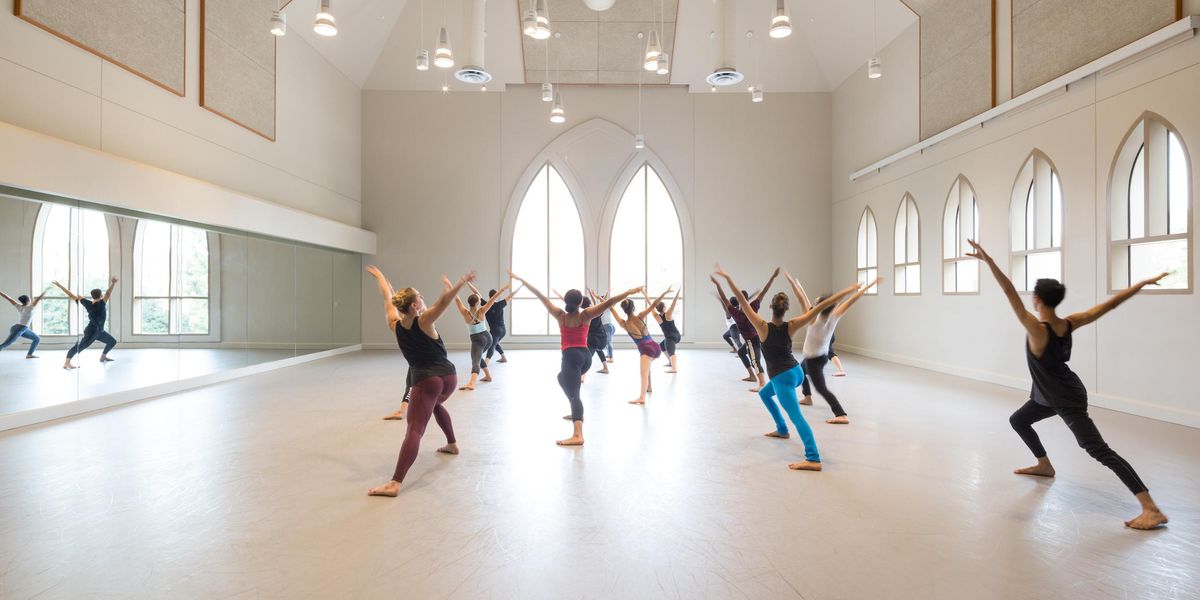Technique My Way: Tara Dunleavy
Spectacular schedule.
A lifelong New Yorker, Tara Dunleavy has put in the sweat it takes for a career in theater dance. Since graduating as a dance major from Hofstra University in 2004, the Queens native spent two years on the national tour of Oklahoma! before joining the Radio City Rockettes.
This December marks Dunleavy’s eighth season on the line, and with the company’s new production Heart & Lights mounting this March, she is bracing herself for a close-to-year-round schedule.
Just one performance season is tiring enough: The Rockettes begin holiday show rehearsals mid-September, start performing in early November, and go until the New Year. But what’s remarkable is that the schedule typically includes four or five performances a day, seven days a week.
“The whole show is a 90-minute cardio workout,” Dunleavy says, noting that any rest in between the lively dance numbers is nil. “We have eight costume changes; our fastest is in a minute and a half. We’re changing shoes, dresses, hats, gloves—that alone is exhausting.”
To combat the toll that the Radio City Christmas Spectacular can take, Dunleavy has several tactics that help keep her at the top of her game through the grueling performance run.
Morning Routine
While most dancers are working out their morning kinks in class, Dunleavy is already in performance mode. To prepare for a weekday 11:00 a.m. show, Dunleavy’s alarm goes off at 6:30 a.m. She has about an hour commute by train from Long Island to Radio City Music Hall, and likes to arrive at the theater close to two hours before curtain. “I give myself enough time to get ready,” she says. “I don’t like to rush.” She also doesn’t like to leave her house without eating breakfast—oatmeal or whole wheat toast with coffee are favorites.
Getting warm
Five years ago during a non-Rockette gig, Dunleavy tore her right ACL. After two knee surgeries, six weeks on crutches, and a year of rehab, she is meticulous about warming up before a show. She visits the athletic training department (Radio City performers have on-site access to physical therapists, trainers, and gym facilities), particularly the hot whirlpool. “I do my pliés and tendus in there,” she says. “No matter what you do before a 9:00 a.m. show, your body is still asleep. I’ve found it’s a good way to wake up my joints, and it warms up my knee a lot faster.” Dunleavy augments the work in the pool with Pilates, some yoga, and gentle stretching.
To get through an “off day”—whether it’s nagging knee pain or plain fatigue—Dunleavy goes through the exercises that she learned in physical therapy after her ACL tear. “With this injury, the smaller the exercise the better,” she says. But the concept wasn’t easy for a dancer accustomed to big movements to get used to. “It was a huge adjustment for me to realize what I needed. You don’t think these tiny movements are doing anything, but they’re helping.”
Eating for Energy
Snacking in breaks between shows, Dunleavy chooses “plain foods” that are filling and easy to digest. “The worst is doing a performance and feeling hungry—it’s a distraction,” she says. “With 200 kicks in a show, the last thing I need is an upset stomach.” Her go-tos? Greek yogurt, bananas with peanut butter, crackers, and string cheese. “I say, Listen to your body. If you’re hungry, eat something,” she says.
OffStage Recharging
“I’ll take a ballet class if I’m feeling a little weak,” Dunleavy says. For a refresher, she prefers classes at Broadway Dance Center; she’ll pace herself depending on the week ahead. “Taking class on top of doing so many shows leaves room for more injury. I tend to take more classes during the off-season.” (Spinning—a low-impact, high-cardio workout—is also Dunleavy’s favorite for off-season training.)
She and her husband relish visiting with family and friends in her free time, though Dunleavy is quick to point out that her focus is on resting. “I’m working six days a week, and every day is different,” she says. “I’m in bed by 9, especially if I know I have a long day. Downtime is precious.”
VMO Revamp
After her ACL tear, Dunleavy found her right VMO (vastus medialis oblique)—a thigh muscle that helps the patella track properly in the knee joint when straightening the leg—was severely weakened. She used this physical therapy exercise to rebuild its strength, and will often repeat the series if she is feeling any knee pain after a long day.
Not injured? It’s a good preventative exercise for any dancer looking to beef up her regimen. (Plus it can help tone your thighs!)
Setup:
Dunleavy wears 5-pound ankle weights (“I know my joint is strong enough to hold it,” she says), but she recommends 2- or 3-pound weights for someone just starting out.
1.
To work your right leg, lie on your right side and use your right elbow as a support so your torso is lifted.
2.
Cross your left leg over your right and plant the left foot in front of your right knee. (Your left knee will be bent, with the knee pointing toward the ceiling.)
3.
Keep your right leg straight, turned out, and stretching away from your center. Flex your right foot.
4.
Slowly lift and lower your right leg, using your left leg and right elbow as stabilizers. Start with as many reps as you can handle (until your leg is fatigued), and increase as time goes on.
Photo at top by Angela Cranford/MSG Photos




